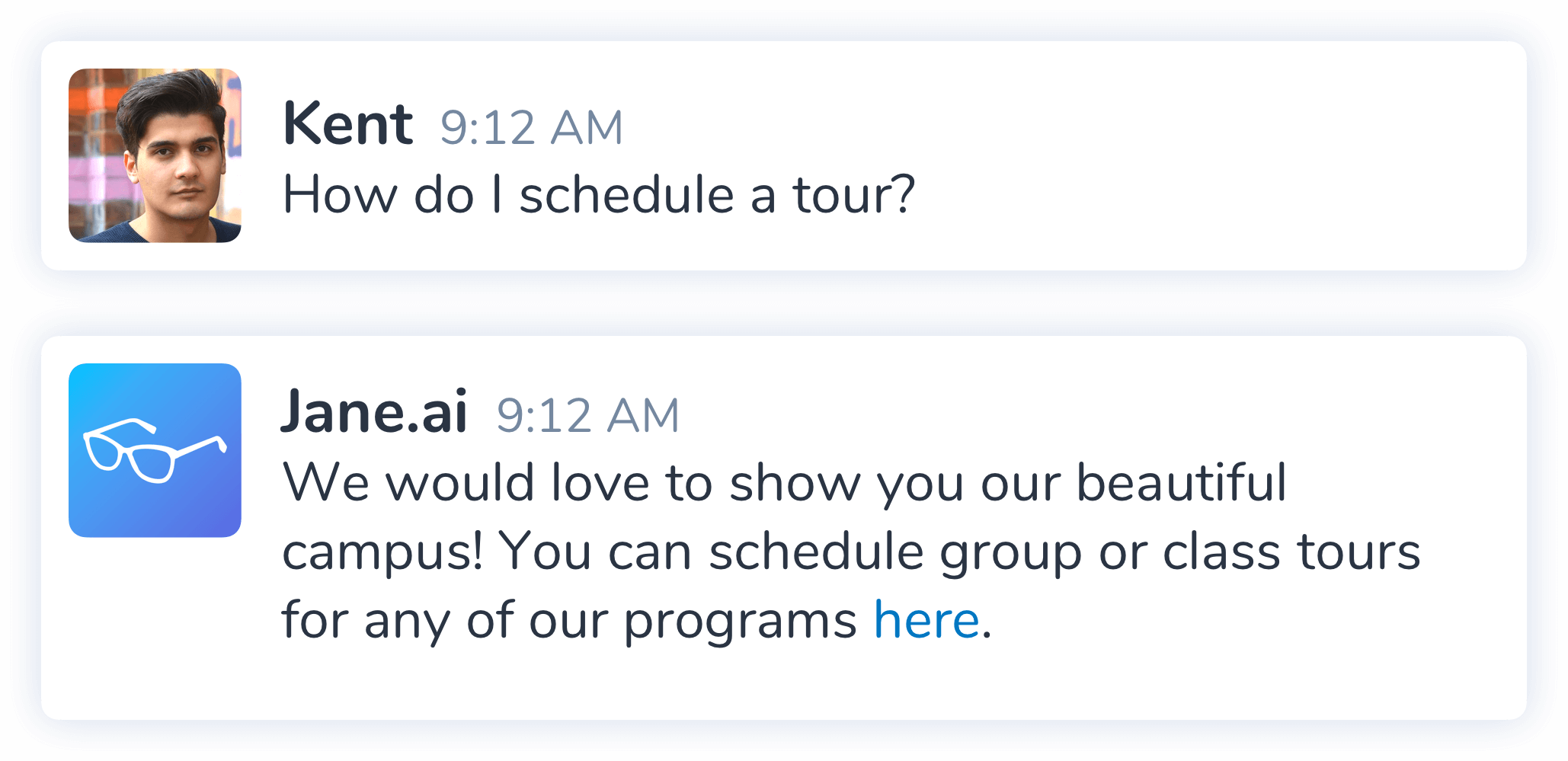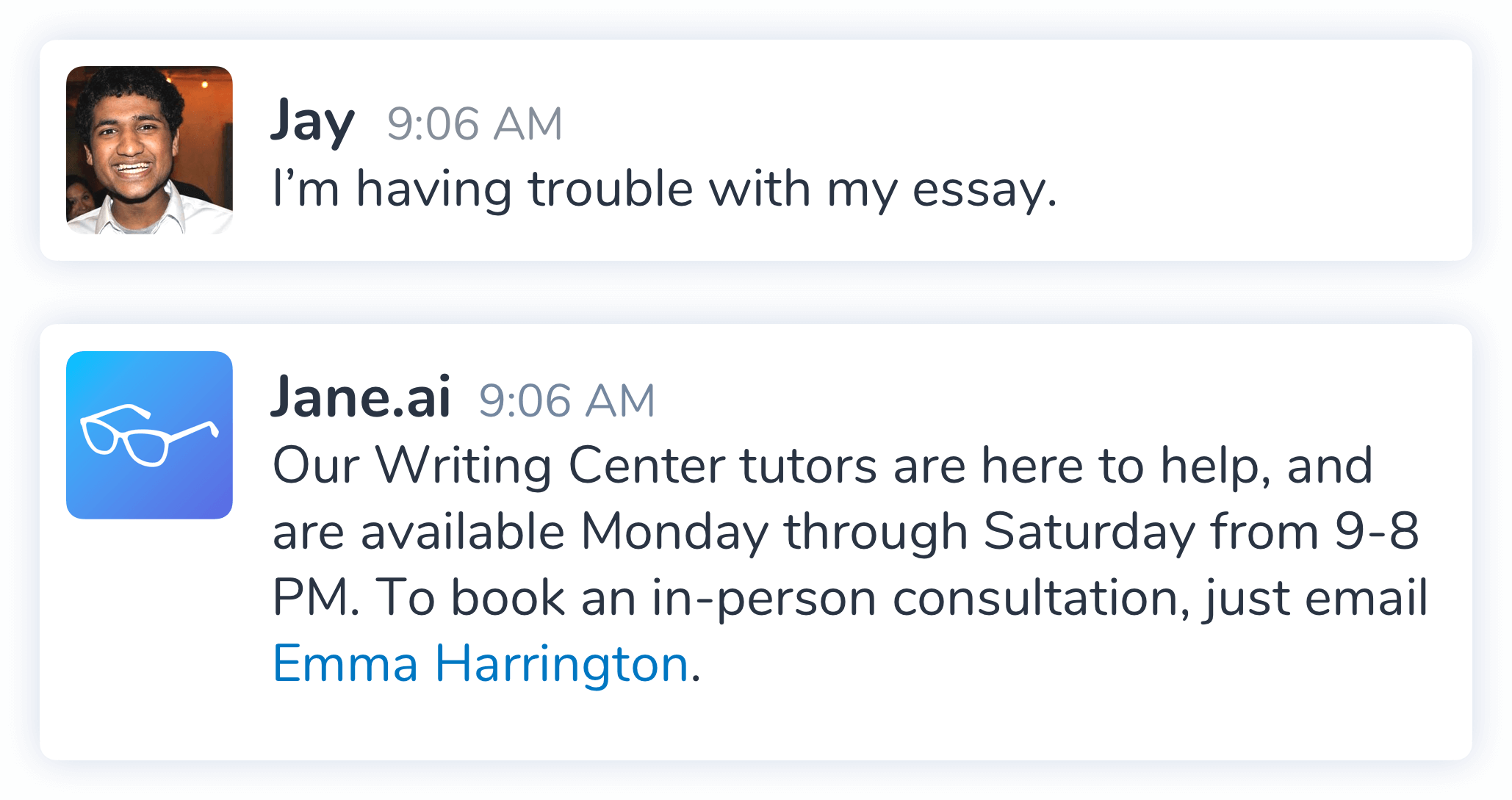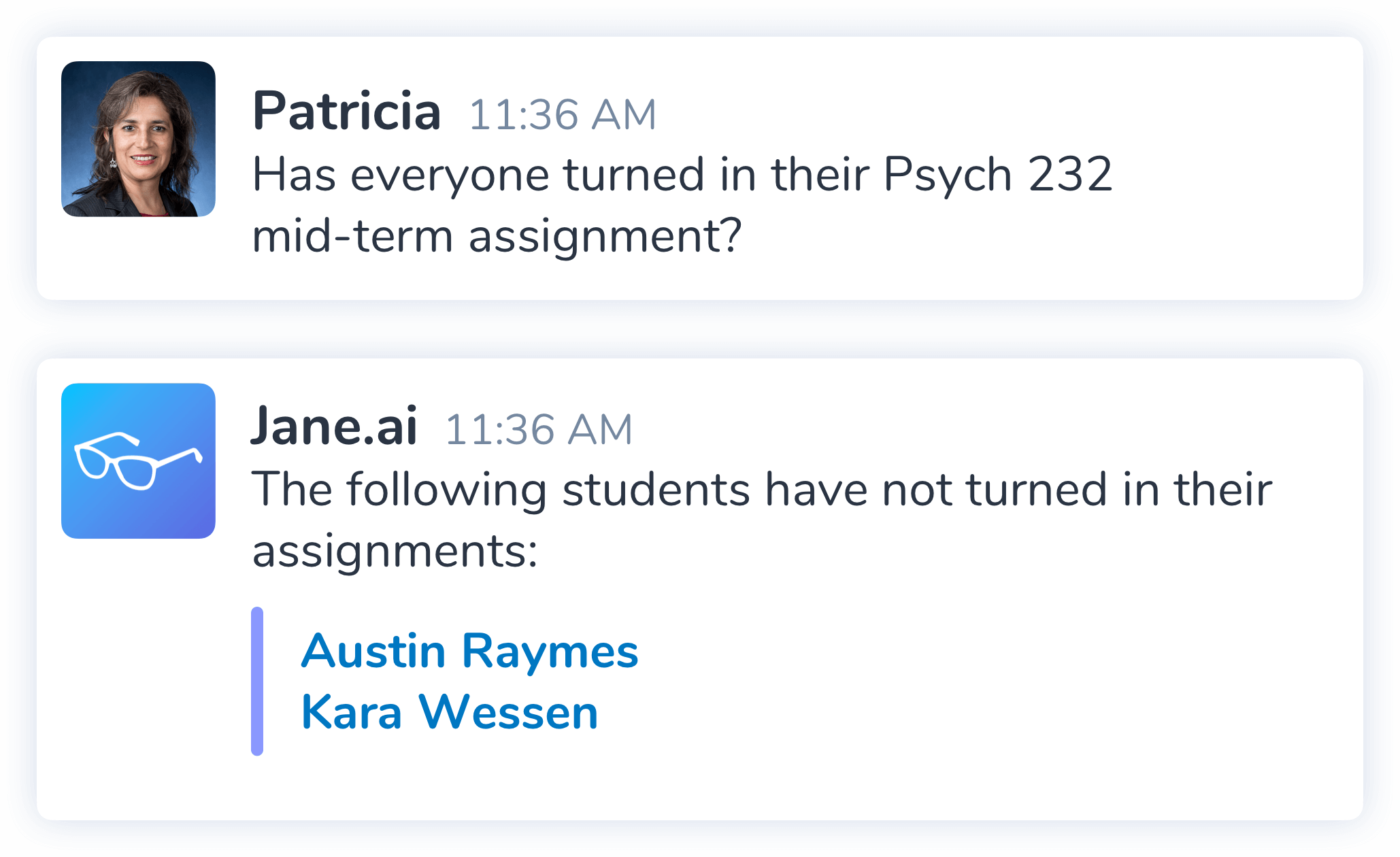There’s no shortage of speculation on how artificial intelligence will impact how we teach and how we learn. What’s certain is that in due time, the whole of education is sure to be disrupted by and benefit from AI.
For higher education specifically, the possibilities are nearly endless, and artificial intelligence has the potential to reshape the entire college or university. Prospective students and their families, enrolled students, faculty, and staff are all poised to reap the benefits: more personalized learning, better student support, more streamlined teaching, lower summer melt, higher acquisition rates—the list goes on.
As we move into 2019, colleges and universities are slowly but surely making the transition into this new AI-powered era. To highlight just a few examples…
- A number of universities are rolling out adaptive learning modules, “taking advantage of data analytics and artificial intelligence to deliver just-right, just-in-time learning to their students.”
- Rensselaer Polytechnic Institute teamed up with IBM to create The Mandarin Project—”a high-tech ‘cognitive immersive room,’ a classroom with a 360-degree floor-to-ceiling screen,” where AI helps students practice their Mandarin as if they were actually in China.
- Just recently, The Massachusetts Institute of Technology announced that it would spend a whopping $1 billion on a new college within the university devoted entirely to the study of artificial intelligence.
However, while the AI-powered possibilities are endless, many of them are just that—possibilities, to be realized at some point in the future.
So, the real question is how can colleges and universities pragmatically capitalize on AI in the here and now?

To answer that question, let’s look at some insights from the Online College Students’ Comprehensive Data on Demands and Preferences and the 2018 Cost of Recruiting an Undergraduate Student Report…
- Only 17 percent of students rated their experience on mobile university websites as “excellent.” 76 percent rated their experience as either “challenging” or just “okay.”
- 59 percent of students visit university websites on mobile at least once a week.
- 85 percent of students look on websites for scholarship information.
- 75 percent of students are looking for admissions info when they are using digital tools.
With these stats front and center, it’s patently clear that the knowledge gathering experience of prospective and enrolled students needs an overhaul. And, luckily for colleges and universities, these students don’t need personal robots or virtual reality classrooms. They simply need an easier way to access vital information.
Prospective students want tuition information, they want to know how to apply for financial aid, they’re looking for the breakdown of student body demographics—and they want that information now. With competition in and cost of student acquisition increasing exponentially each and every year, their search should be made as enjoyable and as effortless as possible.
Current students need to check their meal points, they want to know how to schedule a session with a tutor, they want to know how they did on the midterm, etc. Guess when they want that information? That’s right: now. With only “54.8 percent of students completing a degree or certificate within six years of entering a postsecondary institution,” so much more needs to be done to support and retain the student body.

But what about the faculty? Sure, augmented reality would be cool (really, really cool), but what would make their lives as educators easier right now is something that would handle the endless onslaught of repetitive questions, something that would provide instant access to grades and assignments.
If only such a solution existed…
Well, it does. We built it.
Meet Capacity, your AI-Powered Teammate (or classmate, if you like).
Capacity makes all your college or university’s intelligence accessible through a simple chat interface, giving students, faculty, and staff instant, on-the-go access to the information they need.
Capacity supercharges your admissions department…
(Before rebranding, Capacity previously did business as Jane.ai.)

Round-the-clock support to your student body…

Streamline the professor and TA experience…

Capacity is already at work for Washington University in St. Louis, helping professors navigate the process of commercializing their research. So, instead of having to hunt and peck, having to scour pages and pages of a website, professors simply ask Capacity.
“What excites me most about Capacity is not only it’s ability to answer questions from our staff, but the fact that it can uncover all of the topics that people have questions about.”
Jennifer K. Lodge, PhD
Vice Chancellor of Research, Washington University in St. Louis
We’re also holding some very exciting meetings with several other higher learning institutions across the country, and our talks have been eye-opening, to say the least.
When we first created Capacity, we thought we’d be working with other fast-paced tech companies like ourselves. However, we quickly discovered that the organizations that needed us most were the ones we assumed were traditionally slower to adapt, like 100-year-old educational institutions.
It now makes perfect sense.
Colleges, universities, and school systems are often massive enterprises, sometimes comprised of more roles and departments than your average enterprise. In this tangled web of intersecting departments, applications, and platforms, Capacity is the ideal solution. It can quickly and easily connect to all of these systems to give students, faculty, and staff instant access to the information that up until now has been siloed away.
Capacity effortlessly captures intelligence from docs, spreadsheets, handbooks, website pages, and even the minds of team members, and it delivers it via whichever communication channel works best for the institution — be it an external-facing website or app, an internal communications app like Slack or Gmail, or even SMS.
Some of the colleges and universities we’ve spoken to want Capacity to support their student body. Others see Capacity answering admissions-related questions from incoming students. And still, others would like Capacity to make the lives of their faculty a heck of a lot easier.
But whatever the integration, the outcome will be the same—Capacity will soon transform their universities from the ground up.


